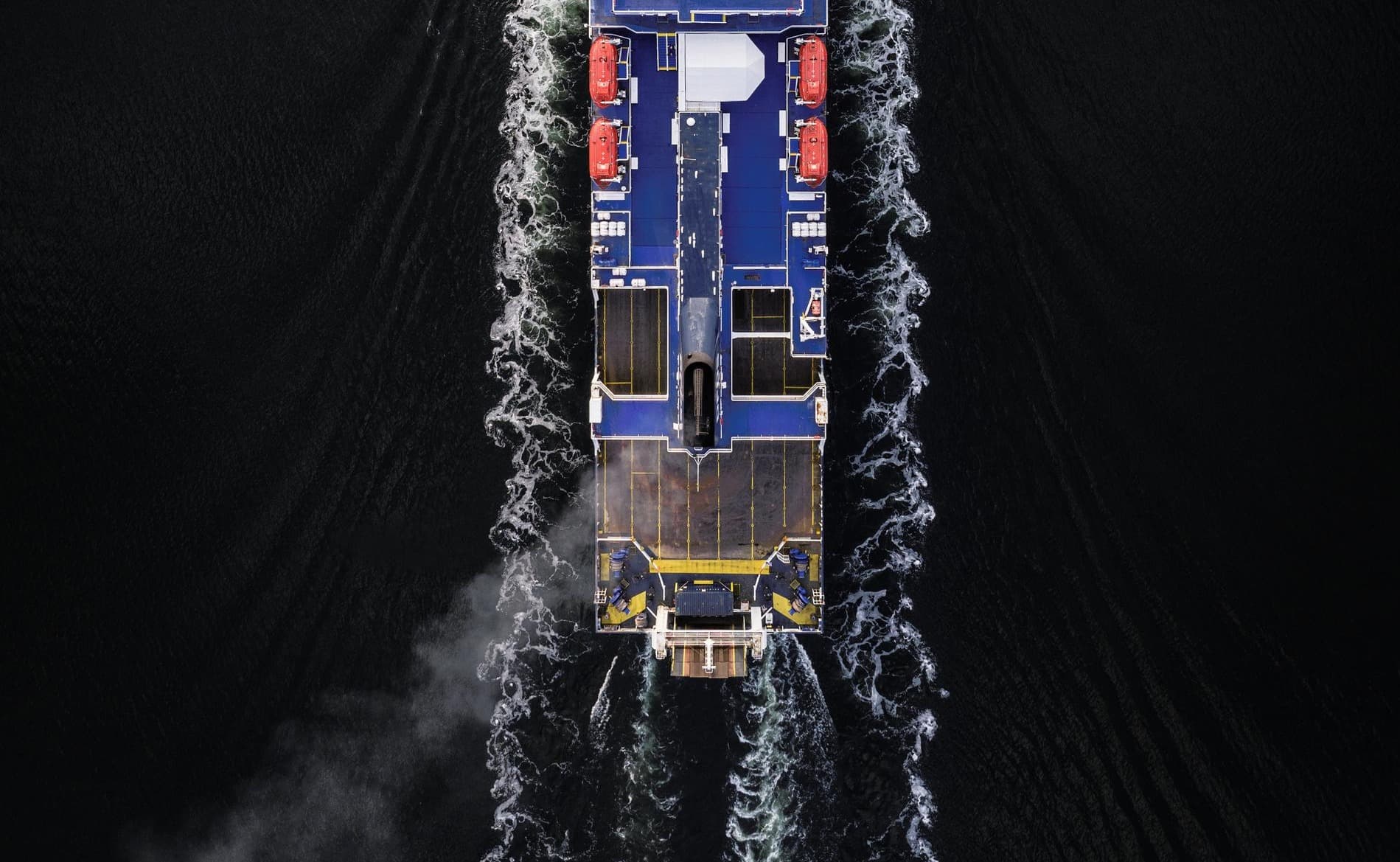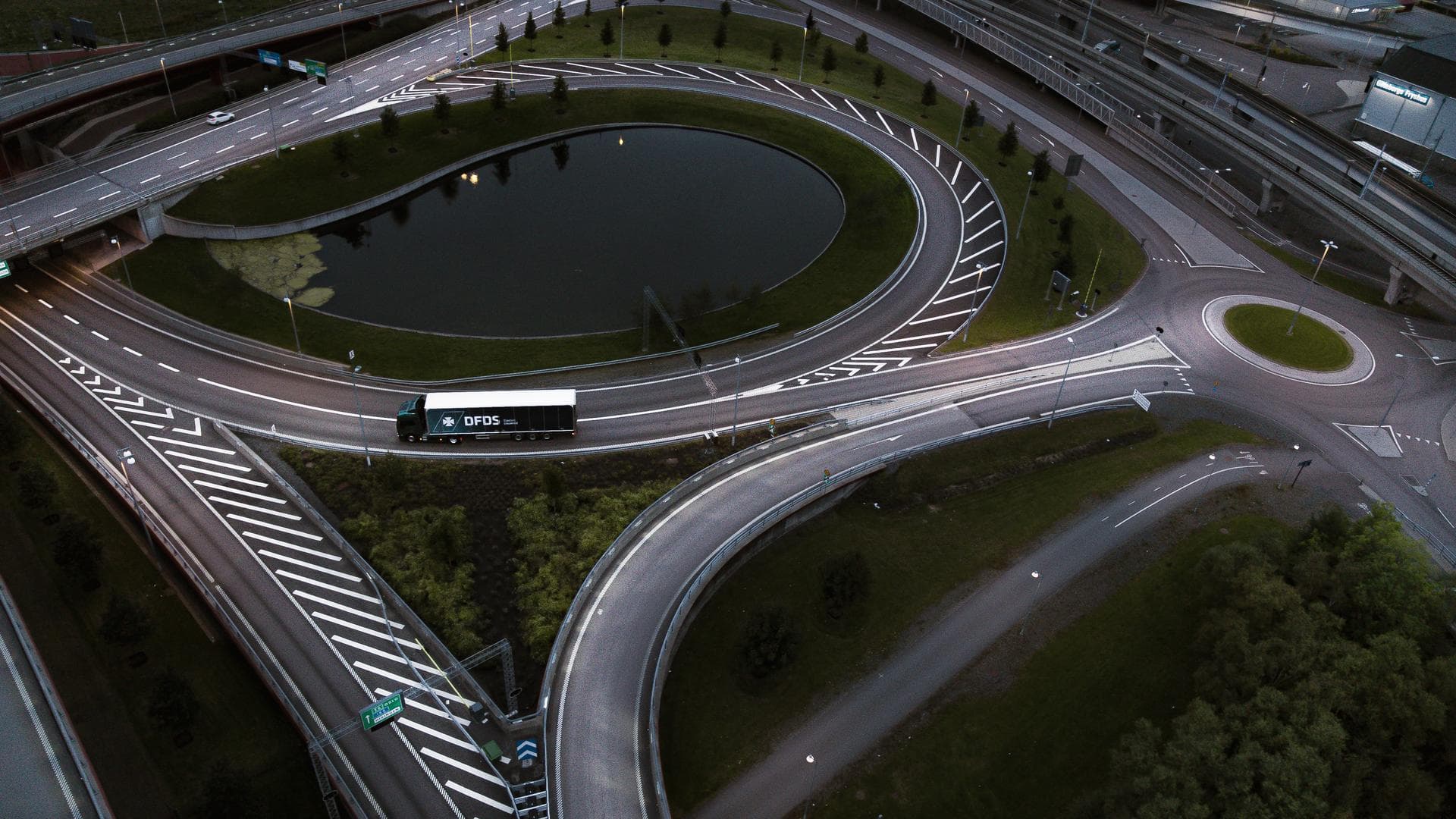
Sustainable fuels
We are engaged in various projects aimed at replacing fossil fuels with more sustainable alternatives to reduce carbon emissions in freight and logistics.
Integrated solutions
Logistics SolutionsSupply Chain SolutionsThird Party Logistics (3PL)Fourth Party Logistics (4PL)WarehousingConnectivity SolutionsProject CargoCustoms ClearanceDecarbonised SolutionsContract LogisticsAccelerating the transition towards net zero operations within our own network.

Freight transportation is a significant contributor to global emissions. At DFDS, we are committed to responding to the climate emergency and contributing to the decarbonisation of supply chains.
On that basis we invest heavily in achieving actual emissions reductions by making direct interventions – called insetting – within our own transport network. Offsetting drives funding for climate mitigation projects outside the logistics industry, for example, tree planting, and does not reduce emissions from our sector.
Conversely, insetting funds decarbonisation projects within the sector where the emissions originate, creating measurable reductions to existing emissions, and supporting the transition to a net zero logistics industry.
By switching from fossil fuel-powered transport to electric trucks and biofuel on vessels, we create a means for you to reduce your Scope 3 emissions.
DFDS Decarbonised Solutions are a key milestone in our ongoing sustainability journey. We will continue investing in new fuels and technologies to support your climate goals and help reduce the logistics sector's CO2e footprint.

With our direct solution, the emissions reductions are made directly within your own transportation flow, through the use of biofuel on vessels and electricity on trucks. Reductions are applied to the specific route where your goods are transported.
You can choose direct reductions on a select number of transport routes and lanes in the DFDS network in Europe.
If the savings must be made within your own transportation flow, the direct reduction meets your requirements.
Our reduction process is reviewed by our external auditor. The savings are issued via annual certificates specifying the amount of tonnes of CO2e reduced.

Indirect emissions reductions are made within the DFDS network, but not necessarily in your own specific transportation flow . The savings come from the use of electricity on roads and biofuel on ferry routes, stored in our CO2e reduction bank and issued as unique certificates.
You can choose indirect reductions, regardless of which route or lane in our network your goods are transported on.
Our process is reviewed by an external auditor and reductions can be reported to your Scope 3 emissions.
The savings are issued via annual certificates specifying the amount of tonnes of carbon dioxide equivalent reduced.

Today, we offer direct reductions across our European network.
Please contact your account manager to check if direct reductions are available for your logistics operations. If we do not currently have a low or zero-emission solution on your routes, we can work together to implement one.
Yes, both direct and indirect reductions can be reported under Scope 3 emissions. Once reductions are made, they are issued as a certificate, and the reduction is permanently removed from the CO2e bank.
When you purchase a certificate, it can be reported as savings to your Scope 3, category 4 emissions – 3.4 Upstream transportation and distribution, as per the Greenhouse Gas Protocol.
Yes, insetting is the foundation of all our decarbonised solutions, and it involves implementing direct actions within the value chain. For both direct and indirect products emission reductions are made on trucks or vessels in our transportation network.
The difference lies in that direct savings are achieved on your own specific routes, while indirect reductions apply to any route within our network. However, you cannot reduce emissions from road transport and report them against sea transport emissions, or vice versa.
Learn more about our insetting process, which uses a mass balance approach for our indirect products.

We are engaged in various projects aimed at replacing fossil fuels with more sustainable alternatives to reduce carbon emissions in freight and logistics.